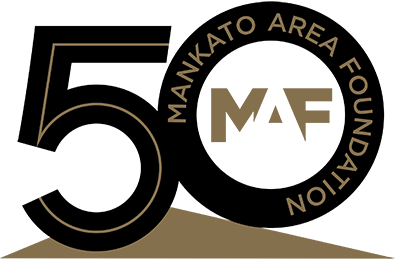 Welcome to the fifth installment of the Everyday Philanthropist. This month we hear from tax professional, Tara Torseth, on why “tax time” is more than a once-a-year thing. She shares with us the importance of mid-year tax reviews and how to prepare for one.
Welcome to the fifth installment of the Everyday Philanthropist. This month we hear from tax professional, Tara Torseth, on why “tax time” is more than a once-a-year thing. She shares with us the importance of mid-year tax reviews and how to prepare for one.
At MAF, we believe that anyone has the ability to shape their community for good and experience the joy of giving. Please sit down, get comfortable, and enjoy this issue of the Everyday Philanthropist—we’re delighted to share it with you!
Tara is a partner at Abdo, an accounting firm with offices in Mankato, Edina, Minnetonka and Scottsdale. Abdo’s mission is to serve as proactive problem-solvers, providing partnership and guidance so that its clients can move forward toward their goals with confidence.
What is a mid-year tax review?
A mid-year tax review, also known as a mid-year tax checkup or mid-year tax planning, is a process where individuals or businesses evaluate their tax situation and make any necessary adjustments to their financial strategies to optimize their tax position for the current year. It typically occurs around the middle of the calendar year, often in June or July.
Who should do them? What are the benefits of a mid-year tax review?
A mid-year tax review can be beneficial for many individuals, regardless of their tax situation. It’s an opportunity to take proactive steps to ensure tax compliance and make any adjustments necessary to minimize taxes.
By conducting a mid-year tax review, taxpayers can make informed decisions to reduce their tax burden, maximize tax benefits and avoid any surprises when it comes time to file their annual tax returns.
How does this connect with philanthropy?
Philanthropy can play a significant role in tax planning, offering potential tax benefits to both individual taxpayers and businesses. Charitable giving can be a strategic part of a comprehensive tax planning strategy, allowing individuals and organizations to support causes they care about while also reducing their tax liability. Here are some ways philanthropy intersects with tax planning:
- Charitable Deductions for Individuals: Individuals that itemize their deductions can claim a tax deduction for qualified charitable contributions.
- Donor Advised Funds (DAFs): DAFs are popular charitable giving vehicles that allow individuals to make lump-sum contribution to a DAF and receive an immediate tax deduction, for the full amount. The funds can then be distributed to charities over time, giving donors flexibility in their giving while still enjoying the tax benefits upfront.
- Qualified Charitable Distributions (QCDs): For individuals aged 70 ½ or older in the United States, making charitable donations directly from their Individual Retirement Accounts (IRAs) can result in tax advantages. These donations, known as Qualified Charitable Distributions (QCDs), count toward the required minimum distributions (RMDs) and are excluded from taxable income.
- Appreciated Asset Donations: Donating appreciated assets, such as stocks, real estate or other investments, can be a tax-efficient way to give to charity. By donating appreciated assets directly to a nonprofit organization, individuals can avoid capital gains tax on the appreciation while still receiving a tax deduction for the fair market value of the assets.
- Corporate Philanthropy: In addition to the tax benefits, corporate philanthropy can enhance a company’s reputation, improve employee morale and foster positive community relationships.
What do I need to prepare for a review?
Preparing for a mid-year tax review involves gathering relevant financial and tax-related information to assess your current tax situation and identify potential tax planning opportunities. Items needed would include:
- Income Documents: Most recent pay stubs, income statements from investments, rental properties, and any other sources of income.
- Expenses Records: Compile records of your deductible expenses such as medical, charitable, mortgage interest, property taxes and business expenses.
- Retirement Account Statements: Bring in your most recent statements.
- Investment Statements: Gather your most recent statements that include year-to-date income and capital gains or losses.
- Estimated Tax Payments: Keep track of what you have paid so far.
- Life Event Information: Note any significant life changes during the year, such as marriage, divorce, birth of a child or employment status.
What is your favorite gift?
This is tough to pick just one. I’m lucky to be involved in the community, through the Mankato Area Foundation finance committee, and Children’s Museum of Southern MN Board. Both organizations are extra special to me, and I like to support them and their missions. I also enjoy contributing to the Greater Mankato Area United Way and seeing the large impact they make on the community.
I would say my favorite giving area, is that for the last couple of years, I have been a part of the Women’s Giving Circle. The Women’s Giving Circle is an amazing group of women in the community that come together to pool their contributions, decide where to give and learn together about their community, its needs and philanthropy. The giving circle is open to all, and I would highly suggest you check it out if you haven’t heard of it.
